One of the most beautiful hiking areas in Raseborg hides among the reed beds and hazel groves – hiking on the trails of lake Lepinjärvi at dawn
In commercial cooperation with Visit Raseborg
Article by Johanna Suomela
Another world surprisingly close to the busy highway no. 25, and beyond the grain fields, awaits the curious hiker who is hungry for new experiences. Encircled by the reed beds, Lake Lepinjärvi is a paradise for birds, providing memorable experiences in nature in historical surroundings. The prehistoric graves of this versatile region date all the way back to the Iron Age. Come with me to discover the cultural path of Lake Lepinjärvi – let’s follow the sunshine to the lush hazel grove!
Relatively easy trail, length approx. 3 kilometres
Travel time 2 hrs
Table for eating outdoor snacks and a campfire site, but no firewood service.
Map showing the starting point of the trail
My mobile phone wakes me up persuasively. It is time; actually it is 03.45 in the morning. Very early in the morning, on the day we celebrate Finnish nature. They say that an early bird catches the worm, so I must be catching a lot of them. I am about to go to a place I’ve never visited before, and I hope to see the best birds in the best light possible – when the sun rises.
It is still dark, though, when I start my car and drive towards Karis in Raseborg. These wee hours are the time of animals, such as rabbits and foxes, so I drive carefully.
Already on the way to my destination, I am fascinated by how lovely nature can be. The morning mist is just unbelievable! The landscape by the roadside has never been more beautiful!
In less than an hour, I have driven from the middle of Espoo to Karis to meet my friend who I haven’t seen for a long time. We spot a clear path leading to the underpass under Highway no. 25. Let’s go there!
The autumn morning is chilly, and the temperature is just 6 degrees above zero. Good thing that I brought my gloves.
The underpass is a safe passage to the other side of the highway.
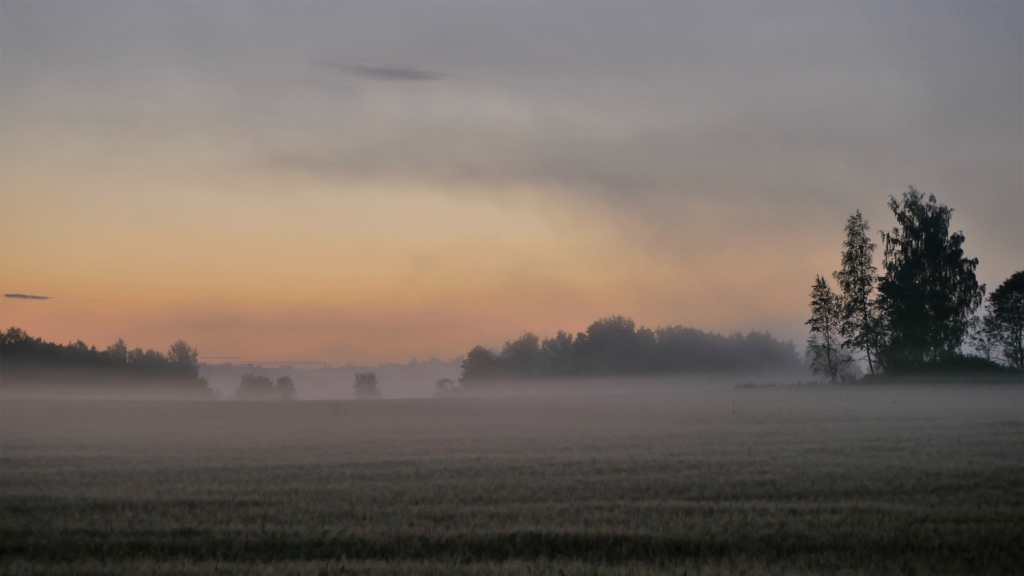
The mist is soft like a feather, as it floats over the fields surrounding Lake Lepinjärvi. There’s so much moisture in the vegetation on the side of the trail that my pant legs get wet.
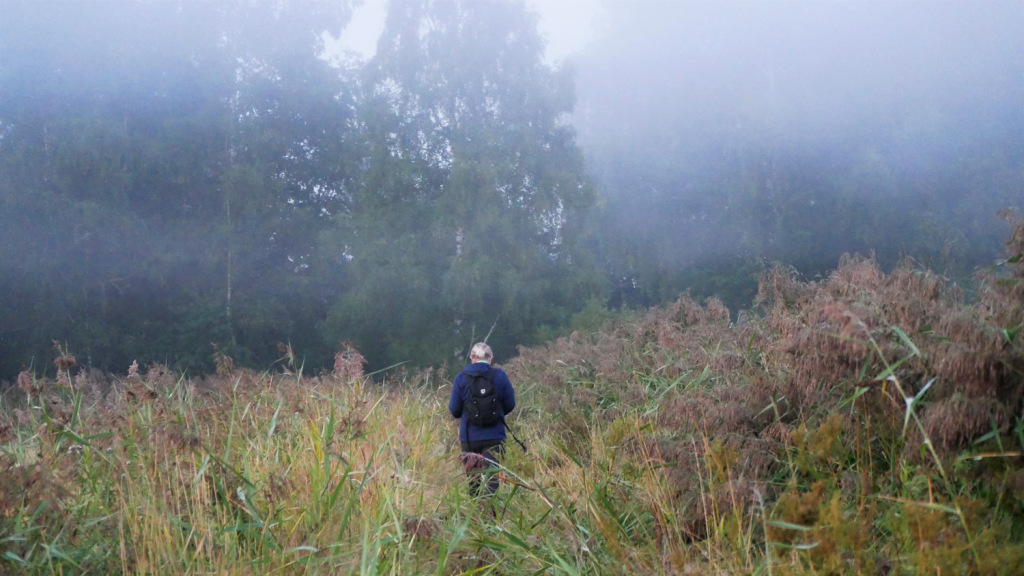
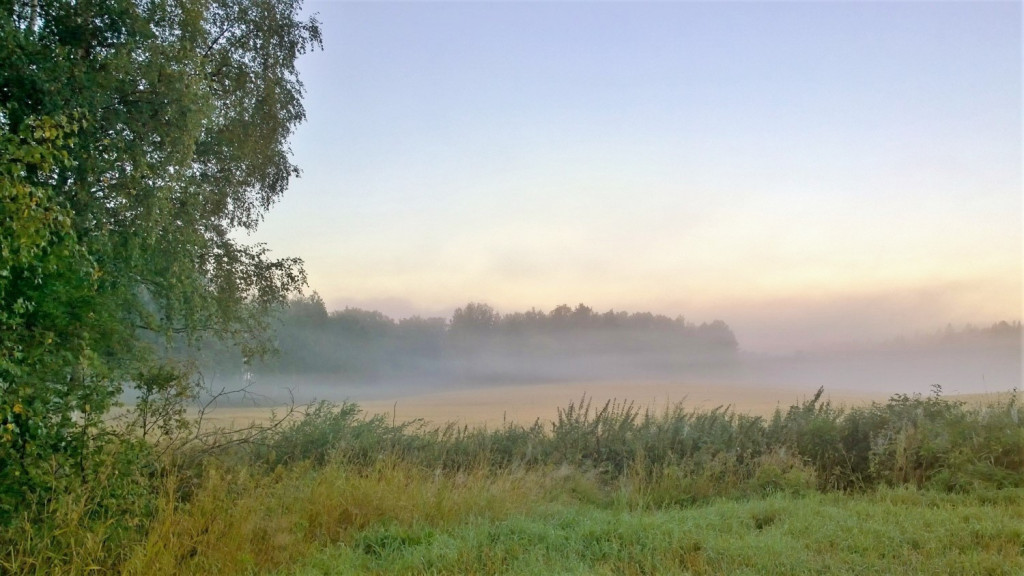
Blooming season is mostly over, but the last brown knapweed of the summer is still shining in the dim light of the morning.
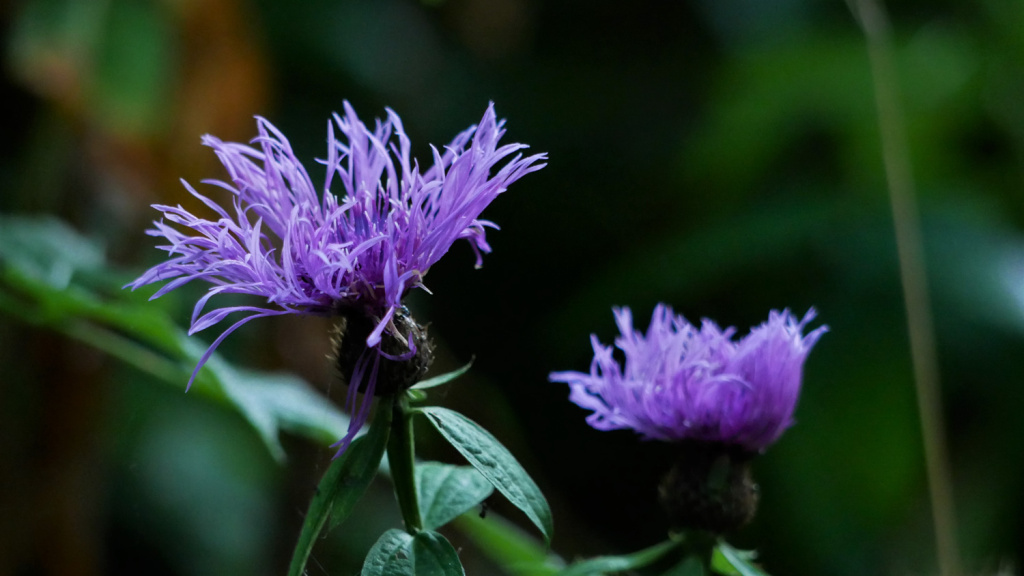
The trail running on the side of the field road ends up in a lush forest and forks. Wooden signposts direct us to take a left.
I have to get to the beach before the sun rises.
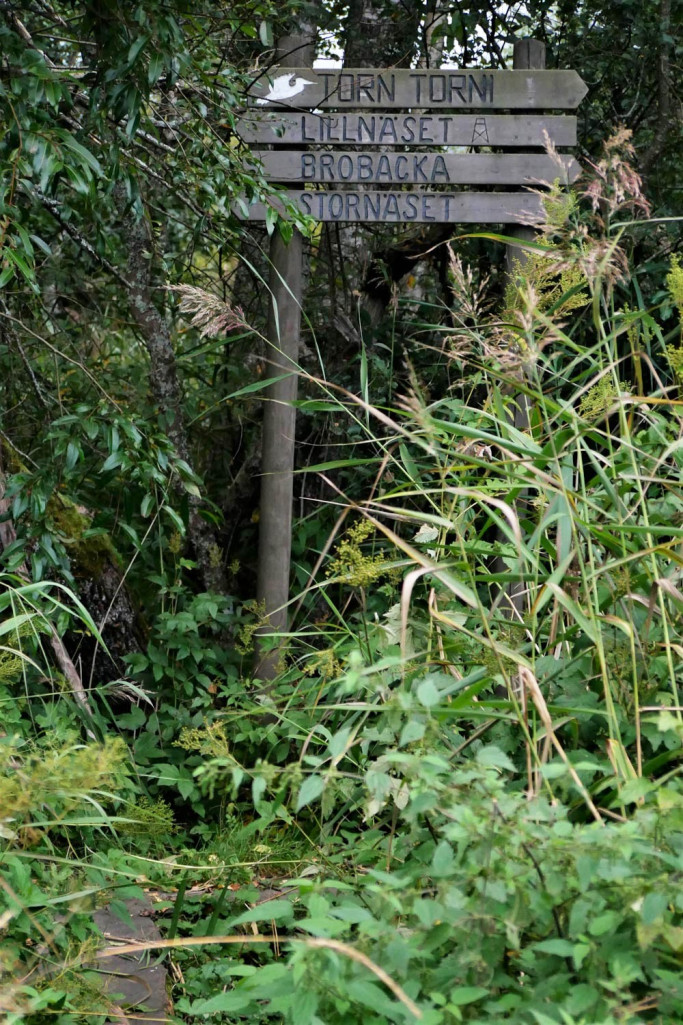
The old bird observation tower of Lillnäset rewards those who dare to come here.
In the time of corona, you should consider a few things if you wish to go to any bird observation tower. Birdlife Finland recommends that you should prefer close-by destinations and not let anyone else use your binoculars and telescopes but your family members. You should also maintain a safe distance to other birdwatchers.
Being considerate is especially important when visiting bird towers. This means, for example that you allow others to use the tower as well and don’t stay up there for too long.
This morning, however, we have the tower to ourselves as no-one else is around.
Carefully we climb up the stairs to the tower as they have no handrail.
Using these kinds of built structures happens on everyone’s own responsibility as does roaming in nature in general.

The sun is about to rise, and Lake Lepinjärvi is full of water birds! In the mist, it feels like it is from a fairy-tale.
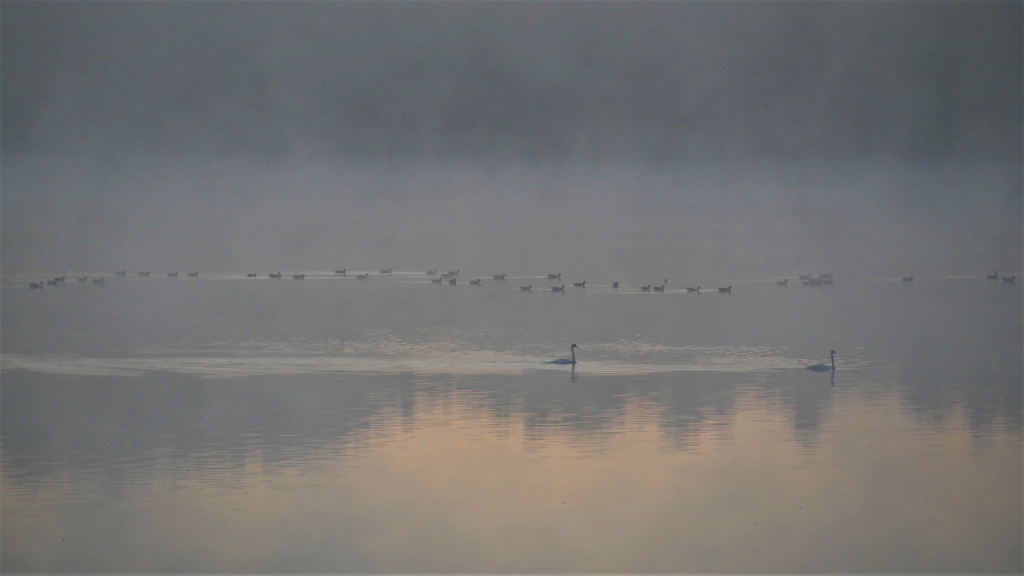
The busiest time of autumn migration is not yet here. However, the birds can be counted in tens, if not hundreds already. The cackling and chattering sounds overwhelming.
Majestic pair of mute swans are swimming in the middle of the mist.
Mist is floating above the surface of the lake.
Time seems to stop just before the sunrise. This is happiness!
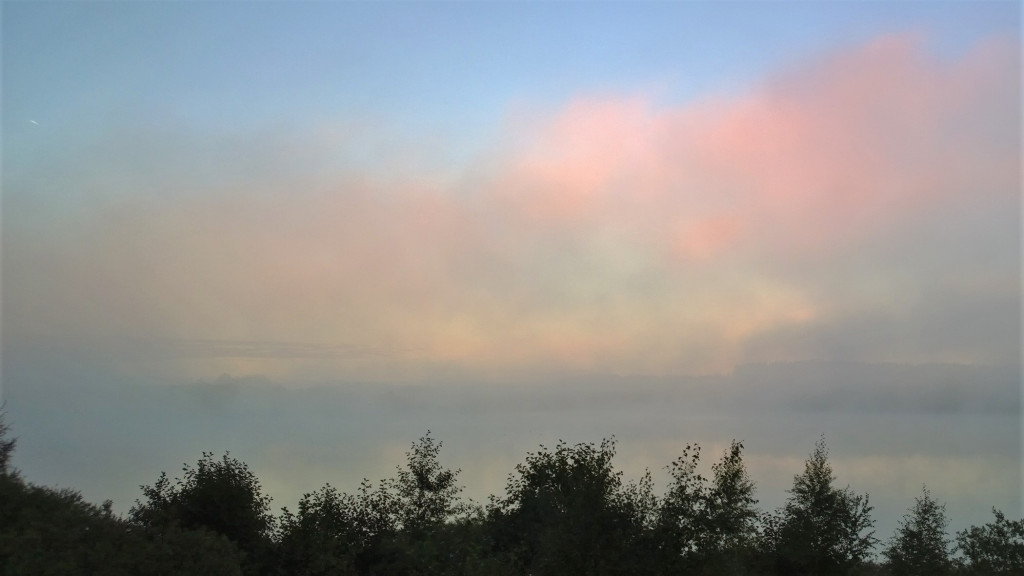
As much as they talk about congestion and masses of people in nature brought on by the corona, I don’t really see any of that right now!
Should someone who loves peace and quiet head to these kinds of small and less-known places instead of over-populated national parks? Moreover, should they choose an early time such as now for a tailor-made experience in nature? Selecting the most beautiful morning light and silence instead of afternoon rush hours and hard light.
It is so beautiful that I almost forget to breathe.
The only thing breaking the silence is the flapping of great wings as the swans take to the sky.
The pair of swans,who were gliding gracefully on the surface of the lake just a moment ago, is now taking off somewhere. Oh, I wish I could get a nice shot in spite of this thick mist!
The cultural landscape from the Iron Age at Lake Lepinjärvi
Thoroughly impressed by the flocks of birds and the breath-taking lake views we descend from the tower. Still going east, we take a little side step off the path.
In the middle of the rocky mound, stands a sign from the Finnish Heritage Agency which has seen its better days.
There is a rock that has about 10 hardly visible indentations, so-called cups, over a small area, and a cremation cemetery under level ground.
Archaeological digs have revealed spear tips, ceramics and charred bones. We are at an ancient sacrificial ground, with Finnish national history from the Iron Age beneath our feet.
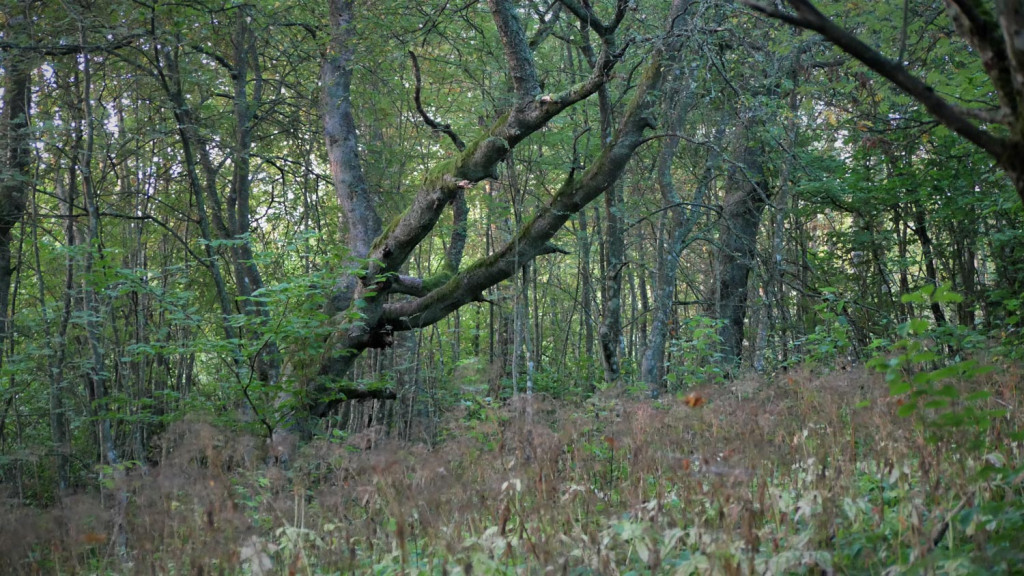
Some rustling sounds carry from the forest, but we don’t see anyone else. There’s a hint of mystery in the air.
We head back to where we came from, walking past spider’s webs that are now visible due to the dew.
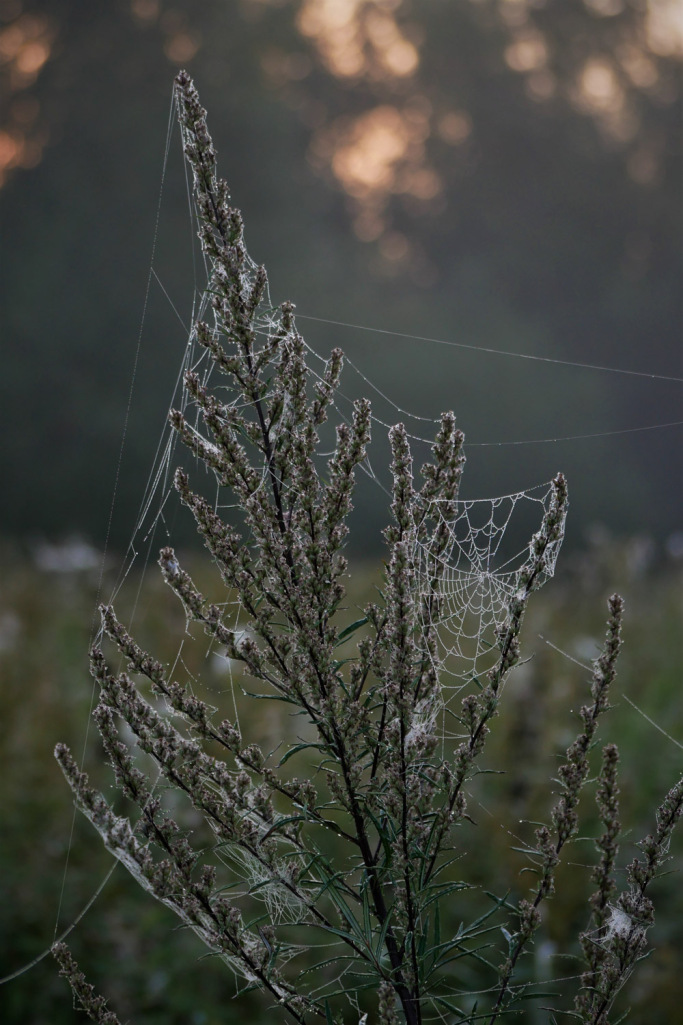
We almost miss a small information sign that tells us that there’s a place ahead of us called Stora Näset. Stora Näset is a small, rocky hill, surrounded by mist and grain fields.

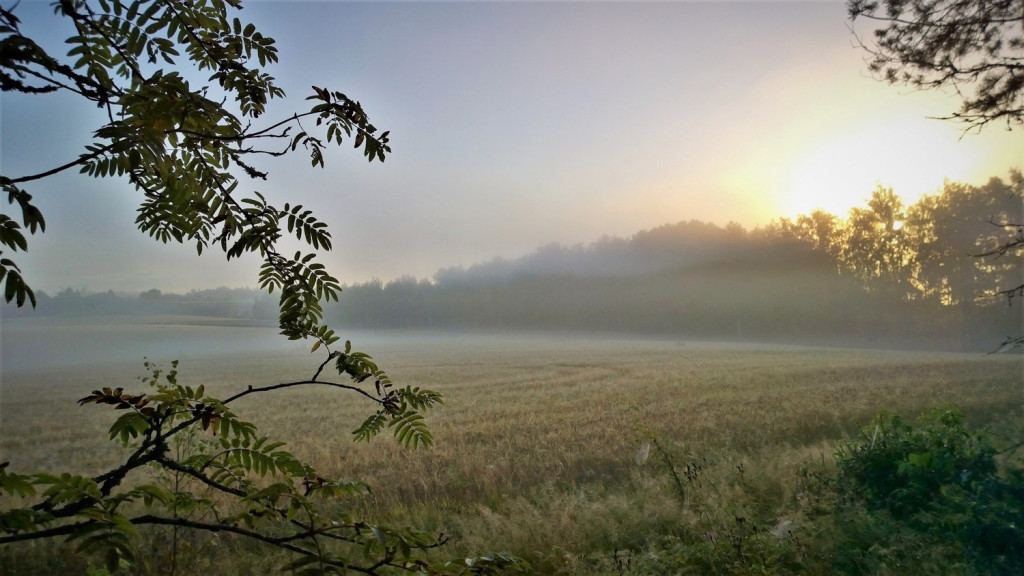
This place dates all the way back to the Iron Age, too. Archaeologists have found pieces of pottery and revealed layers of earth that indicate there might have been a level-ground cremation cemetery here as well.
Walking counter-clockwise on the path going over the hill and climbing down a short but steep cliff, we come to a large and moss-covered stone wall.
The age of this 20-metre wall on Stora Näset is still a mystery.
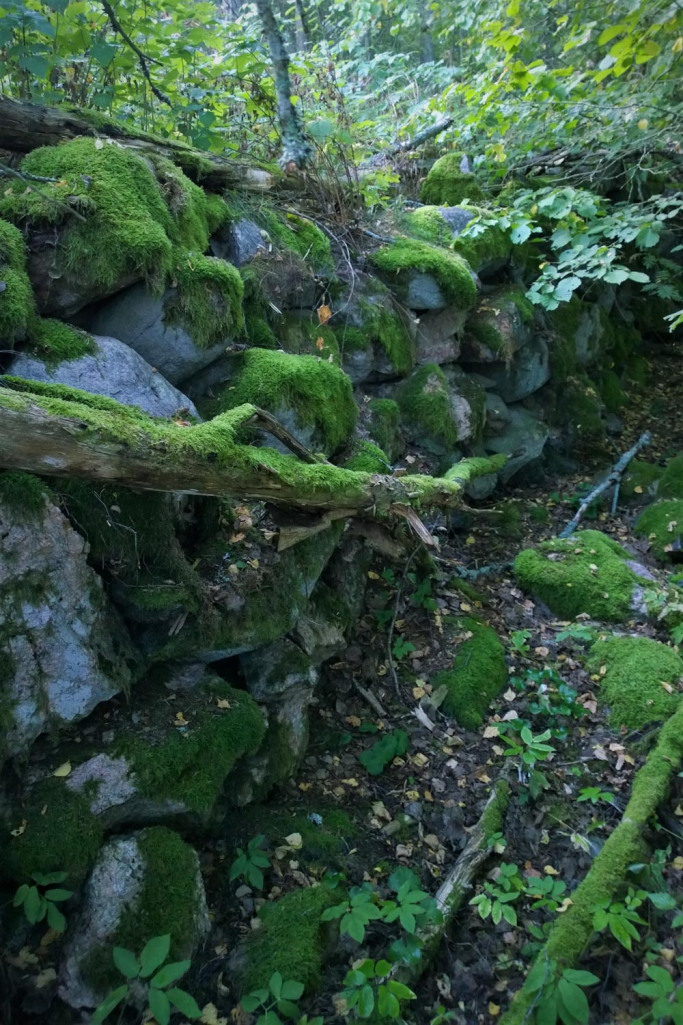
In a moment, we go past the wooden signs again. The path leads us to a new bird observation tower named the Pelican Tower.
About 20 metres length of the oldest duckboards is wet and slippery due to overhanging vegetation, but soon there’s also dry wood to be walked on.
The trail passes hazels and large coniferous trees, leaving the cliff of Själdberget to our right.
It feels like in a real wilderness – it is unbelievable that we’re so close to the highway.
Just before the stairs leading to the Pelican Tower, a large information board standing at the crossroads shows us where we are on the map. It also tells us what to expect.
If all goes well, one could spot the long-tailed tit, bearded tit, water rail, red-necked grebe, mute swan and the smew. Other species that have been recorded here are for example marsh harrier, ruff, corncrake, Bewick’s swan, Slavonian grebe, wood sandpiper, common tern, crane and whooper swan.
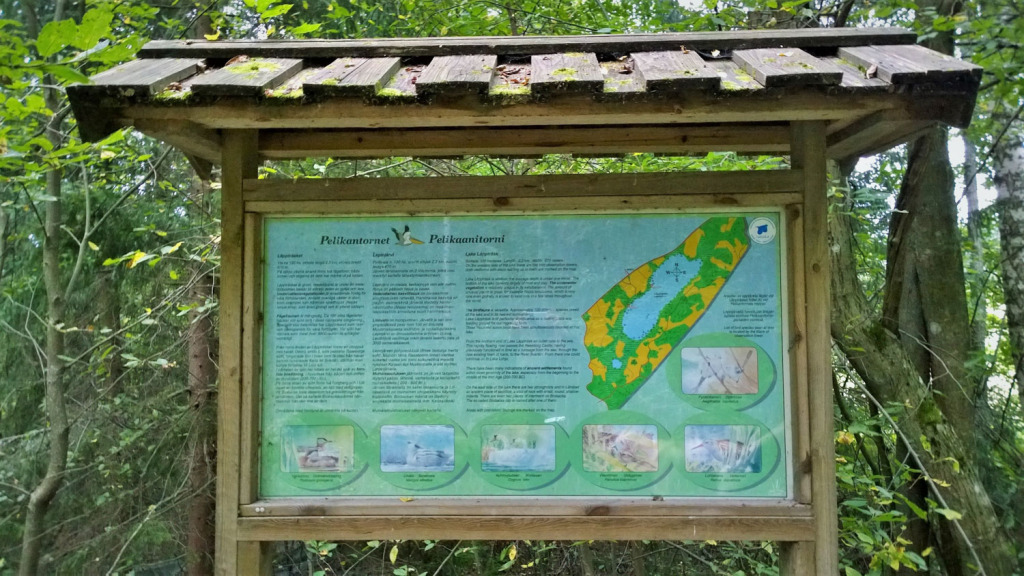
Lake Lepinjärvi in Raseborg is one of the most important bird lakes in the Uusimaa province.
About 100 species of birds nest here regularly, but as much as 160 have been recorded in Lepinjärvi and its surrounding areas.
At the time of spring- and autumn migration, this shallow and eutrophic lake is an important resting and feeding place for migratory birds. When the migration is at its highest, there are over 220 different species here, and over 3000 water birds have been seen visiting the lake at one time!
During migration, you can also spot the pintail, bean goose, grey heron, gadwall and the redshank and spotted redshank.
So the bird plate is quite full at Lake Lepinjärvi!
The autumn migration is on its way, and more birds can be seen then, because the migration is divided over a longer period, and thanks to successful nesting, there are more birds going out than coming in. The best time to see migratory birds is between September and October.
I notice that recognizing the birds is not easy. They fly overhead so quickly, and the dim sunlight shining through the mist doesn’t help a bit. Are they greylag geese, perhaps?
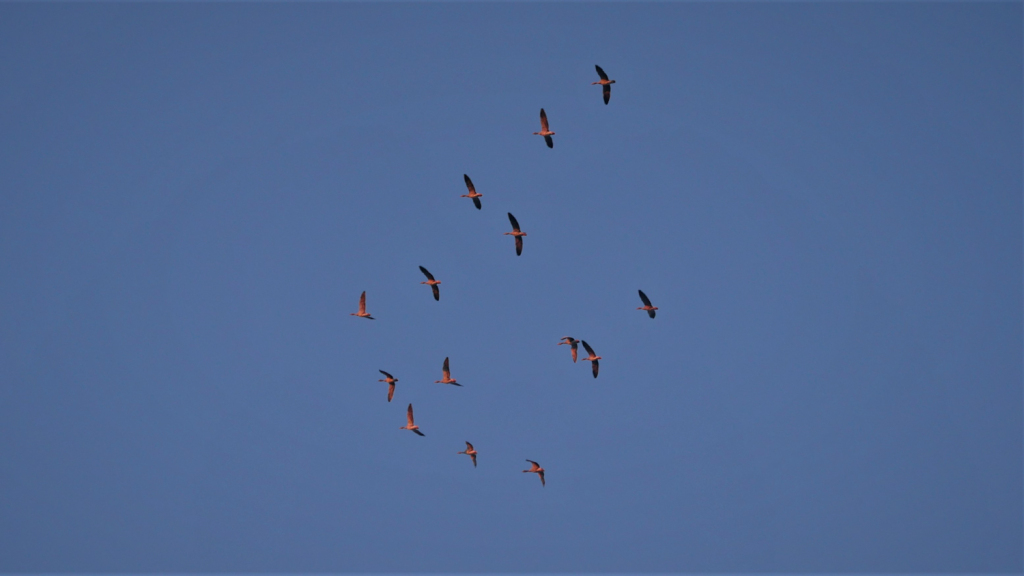
Lake Lepinjärvi is part of the Natura 2000 regions, protecting biodiversity in the EU. Lepinjärvi is also part of the national bird wetland protection programme.
Lepinjärvi is definitely the ideal place for birds, as it is approximately one metre deep, and the shoreline is covered by a tall reed bed.
Moreover, there is a very rare plant species at Lepinjärvi, namely
Najas tenuissima which is one of Finland’s – if not the world’s – rarest aquatic plants.
The Pelican Tower of Lepinjärvi
The off-main trail path leads down from the information boards to the beach on stairs and onto wide duckboards that are placed well above the ground.
That means that you can come here to see the birds even during spring flood!
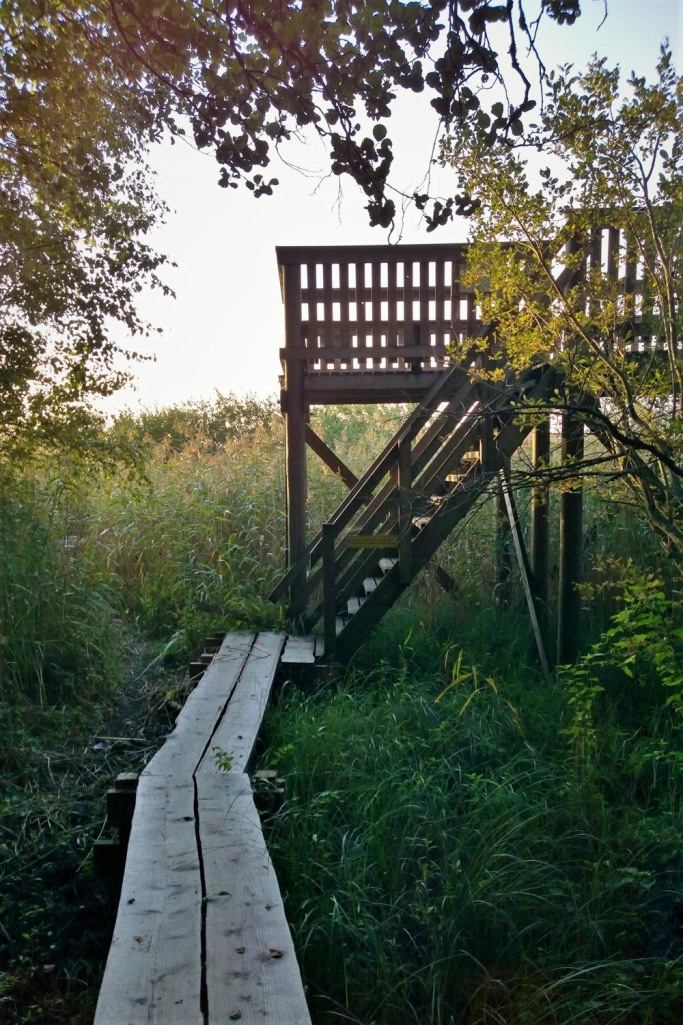
Standing on the Pelican Tower, we can see how the sun of early autumn makes the mist floating over the lake golden. The birds are hiding somewhere under the opaque blanket.
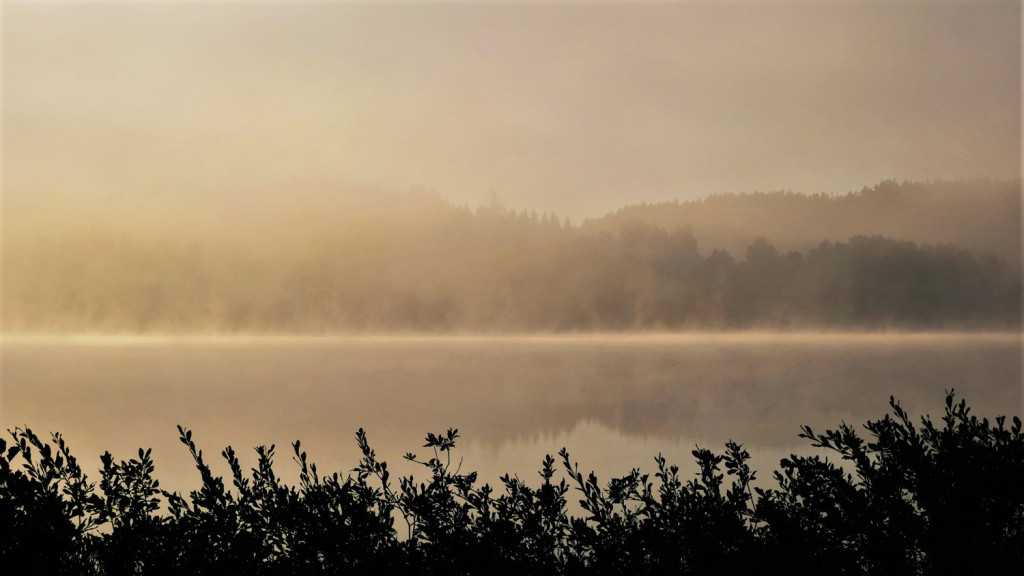
My friend picks an empty beer can up from the ground as we leave the tower. Beer cans are not indigenous to this region, so it’s best to take it with us to be disposed of properly. A little plastic bag normally meant for dog poo will work as a handy place to store the can temporarily.
We start walking alongside the field to the northwest. There are supposed to be more stone structures from the Iron Age somewhere close to Själdberget, but they seem hard to find at this time of the year. Slowly rising morning sun sheds its rays on the slopes, painting the fields golden.
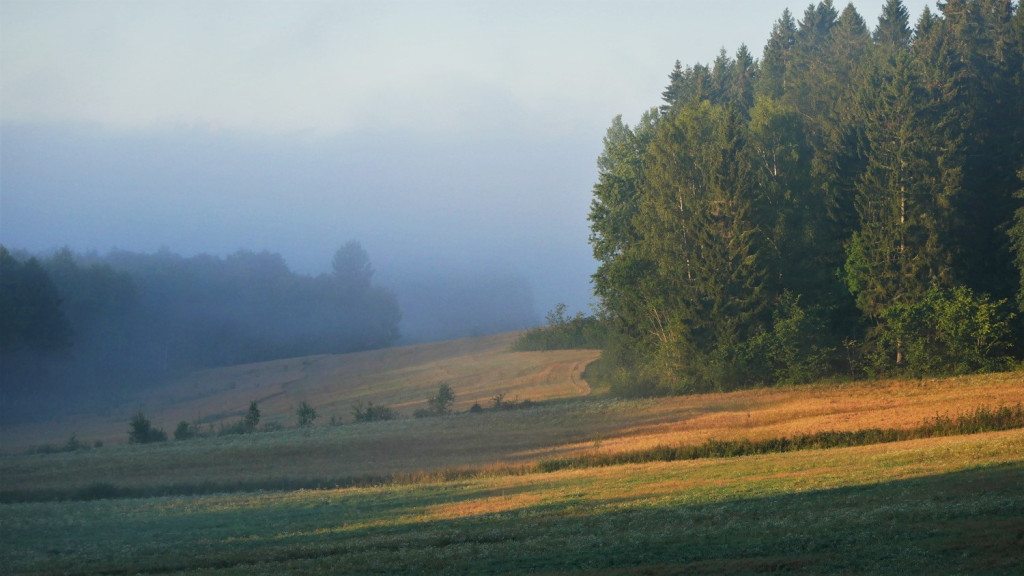
The trail rises up for a good while and turns to the left. There is a resting place with a canopy ahead of us, equipped with a campfire ring and benches. There’s no firewood available.
The hill of Brobacka brings travellers from the Iron Age to the 20th century
As we cross over the ditch, we see more signs along the path to Brobacka that tell us what we can expect to find on the hill.
Evidence of settlement and cultivation has been found in Brobacka that date back to the Iron Age and up to the beginning of the 20th century.
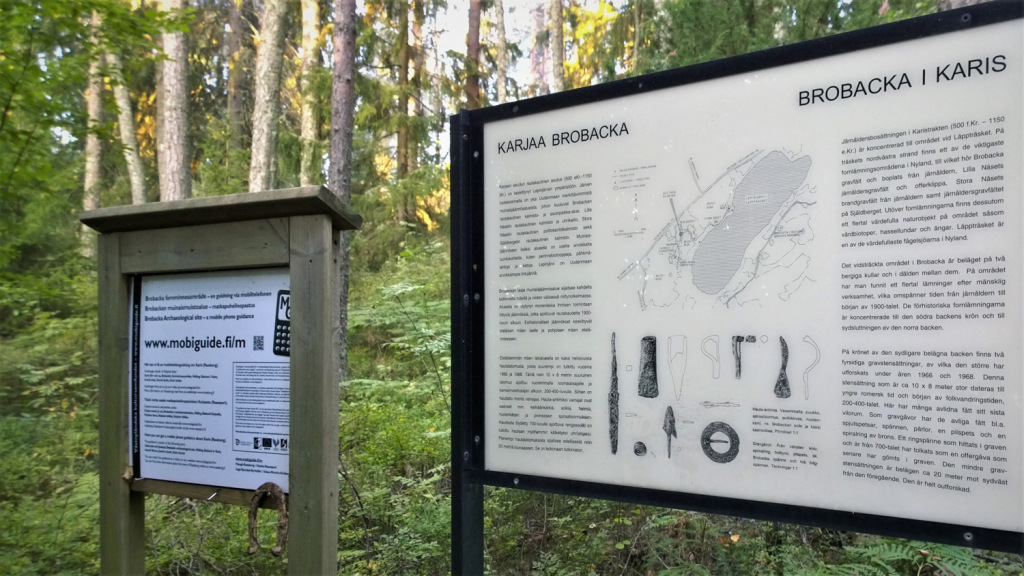
The signs also tell us that there’s an instructive video available about Brobacka on Mobiguide. We walk up a wide and smooth path covered in tree needles. Ground on this section of the trail is full of forest litter and so far the easiest to travel. As there are roots growing over the trail, it is not accessible by wheelchair for example.
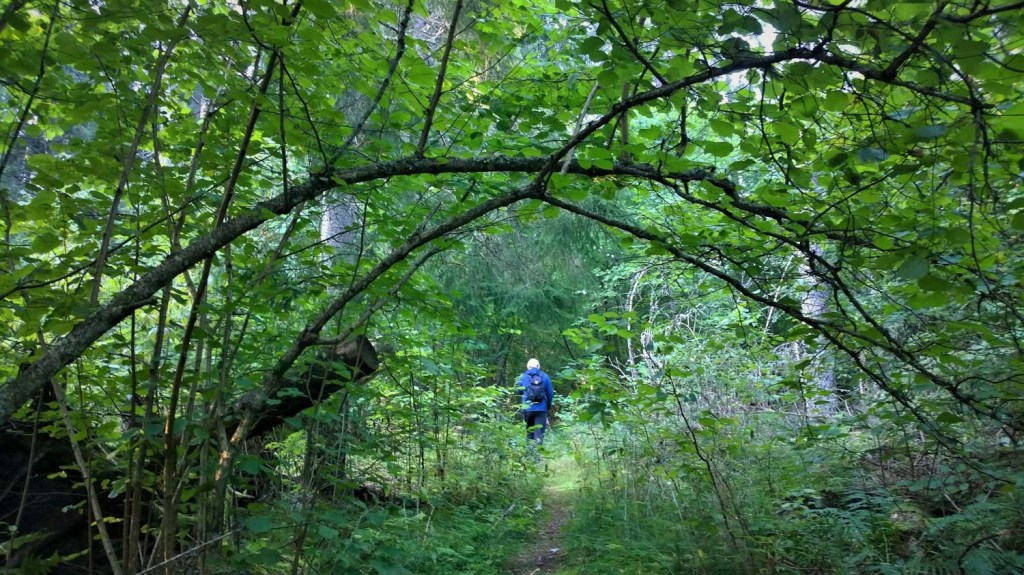
If you are lucky and patient, you may be able to spot the nutcracker that lives in the hazel groves. As much as we try to move quietly, the nutcracker eludes us today.
Only a few squirrels are afoot, foraging for nuts.
The bushes filter the sunlight that is casting shifting dark and light spots on the trunks of the trees and flashing playfully in the foliage.
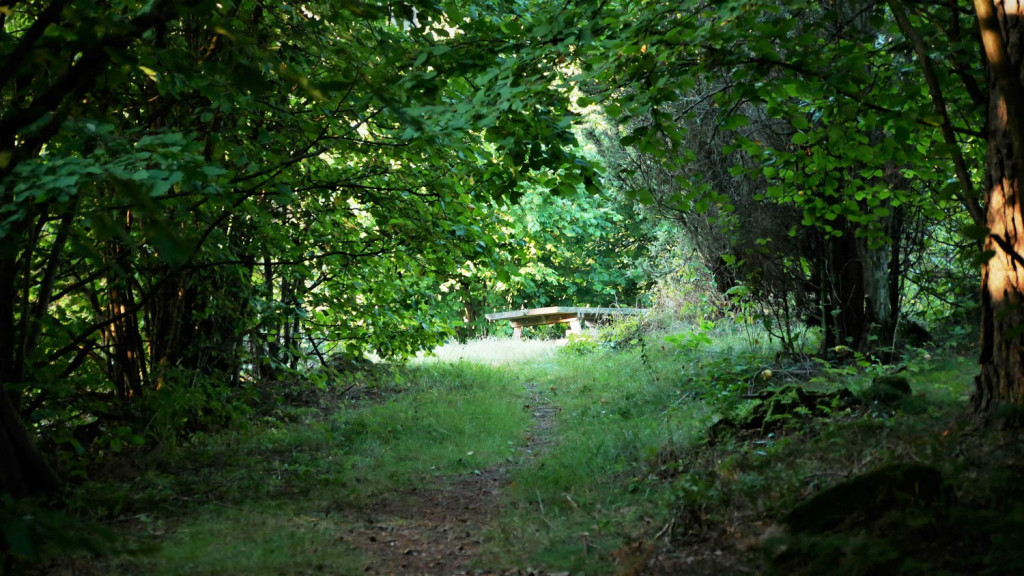
We pass the nationally valuable cultural heritage landscape, the meadow of Brobacka, as the trail slowly turns to the left.
Under the hazel by the meadow, a sturdy table awaits for hikers eager to have their lunch.
I wish I could be here in the spring or in the early summer as the flowers on the meadow are in their full bloom! Actually, guided tours are arranged here in the spring, when the ancient remains from the Iron Age are best visible.
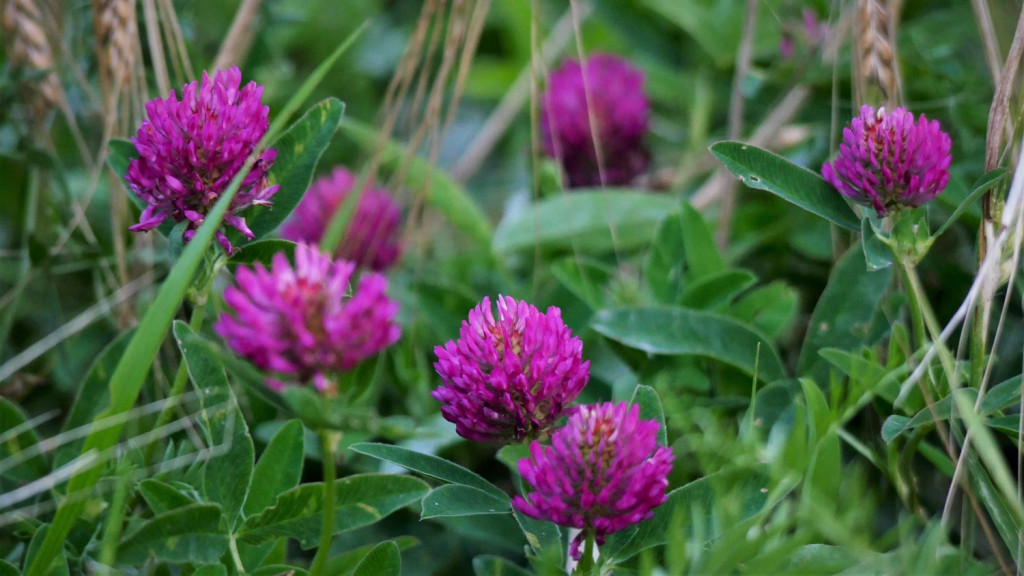
After a while, as we go further along the trail, a clearing opens up in front of us. When we see stakes entangled by the common hop and black and red currant bushes, we immediately know that there used to be a croft here.
The croft belonged to the medieval mansion of Domargård until the end of the 19th century.
This must have been a nice place to live, on this warm slope, with a beautiful view to the lake and a fertile soil to cultivate!
Due south, on the edge of the former croft’s courtyard, a big and old pine with crooked limbs stands guard.
We wonder what might have happened under its branches, and turn back to the direction we came from.
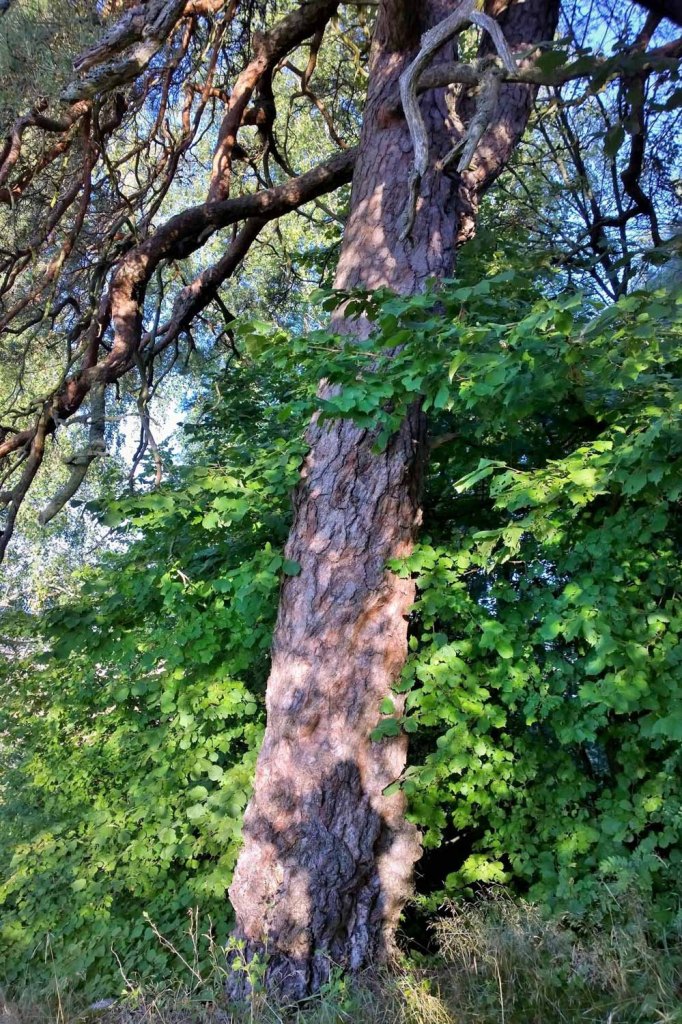
The trail turns right, behind the spot where the croft used to be, to reveal more stacked stones covered in moss.
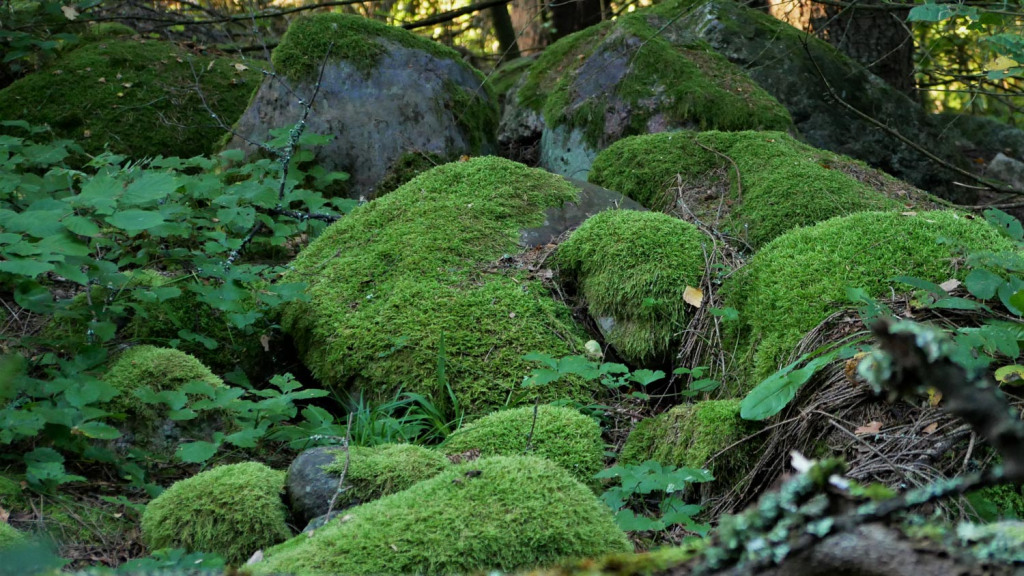
The oldest relics from the region are presumably from 200 to 400 A.D. The most famous of the relics is a buckle that was found in one of the stack of stones. The buckle was named the Buckle from Karjaa and used as a model for a jewel from Kalevala Jewelry. The original buckle, though, is most likely from the Merovingian Period, from 600 to 800 A.D., so it is believed to have been put inside the stack of stones some time later. For what? For an offering, maybe?
Diverse natural experiences in historical surroundings
As we get back to our car, I notice that we have spent two hours outdoors and covered over four kilometres, including the trip to the start of the trail and back. The trail itself is about 2.5 kilometres long. There was so much going on and so much to see that it feels like we have done a much longer hike.
The Finnish Nature Day couldn’t have been better celebrated than spending it on the cultural trail of Lepinjärvi!
Diverse nature and interesting ancient remains meet here in a beautiful way.
Moreover, Mother Nature pampered us with a misty morning and sunrise painted with a delicate brush.
When I get home, I will contact Göran Fagerstedt, who is a guide who knows Lepinjärvi like the back of his hand. Göran lives in Karis, and he has a friendly way of telling people about the ancient sites and history of the region. I value even more the work that volunteer organizations have done for the enjoyment and benefit of hikers like us, when I hear that the duckboards and the campfire shelter have been built by the Natura Society of Karis.
Göran also tells me that there are plans to replace some of the signs and information boards during 2021. Also building a new bird observation tower to replace the old one is in the plans. The signs from the east side of the region will be removed, but the historical sites will still be there, though. That side will probably be the more interesting one for the adventurous explorers.

More information and links
The trail in this text starts 2.2 km from the Karis train station and 2.5 km from the Travel Centre.
Your guide on the Raseborg region is Mr. Göran Fagerstedt who will be back at Lepinjärvi next spring. You can contact Göran and see more information about the trips he arranges by clicking here.
The Raseborg Tourist Services website provides tips for hiking in nature and different outdoor activities.
More stories from Raseborg and its many sights you can find here on Finland, Naturally.
Below is a map of Lake Lepinjärvi, found both on the information board of the Pelican Tower and the lobby of Karis ABC service station.
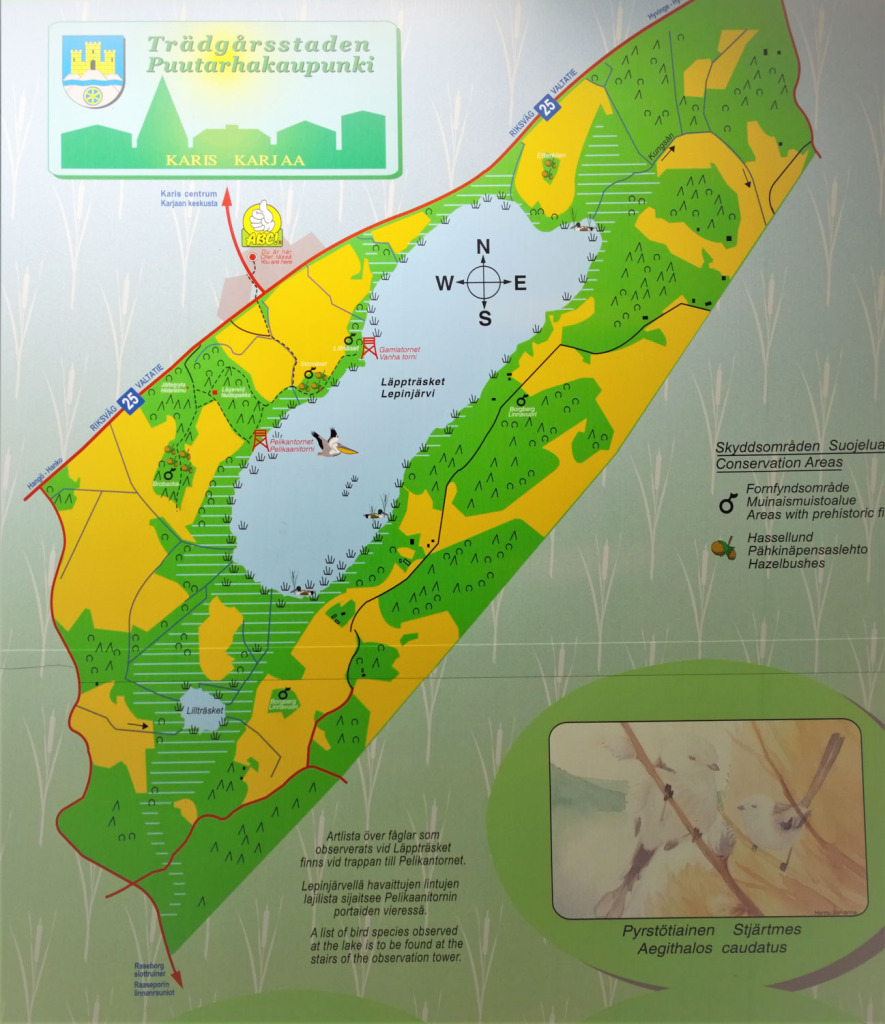
Read more:
Visit Raseborg – Welcome to Raseborg
Visit Raseborg – Plan your stay
Translation Mikko Aslak Lemmetti

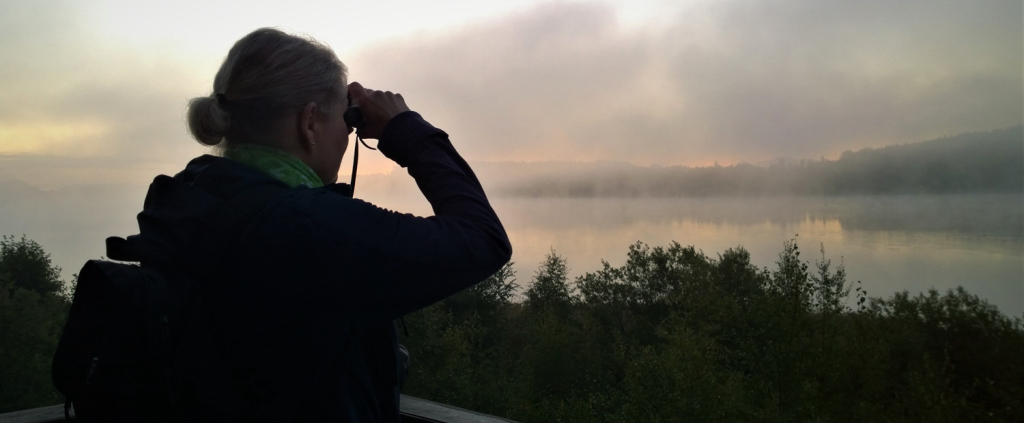
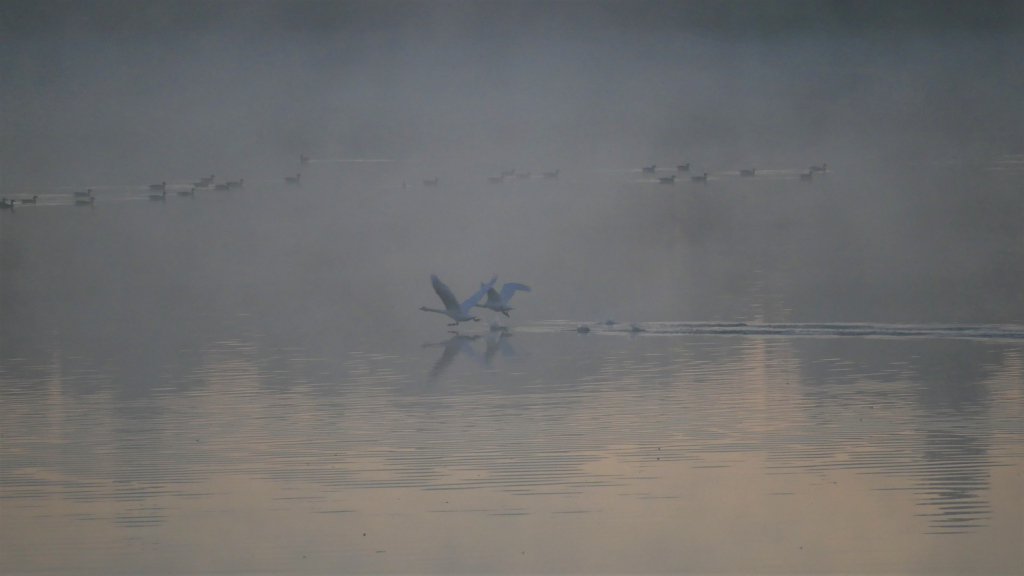


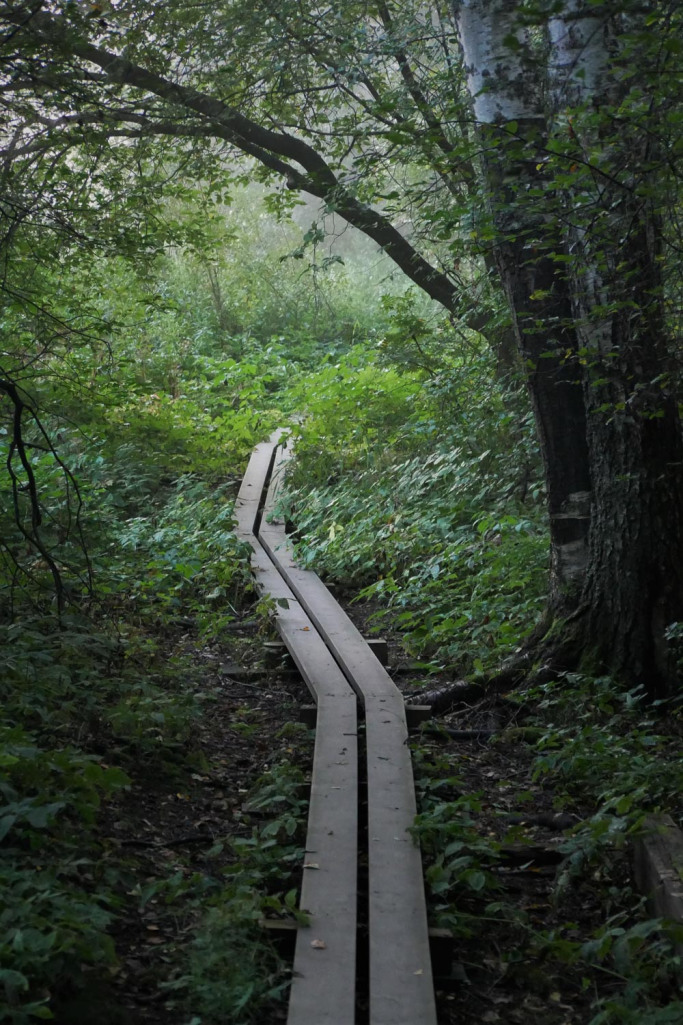

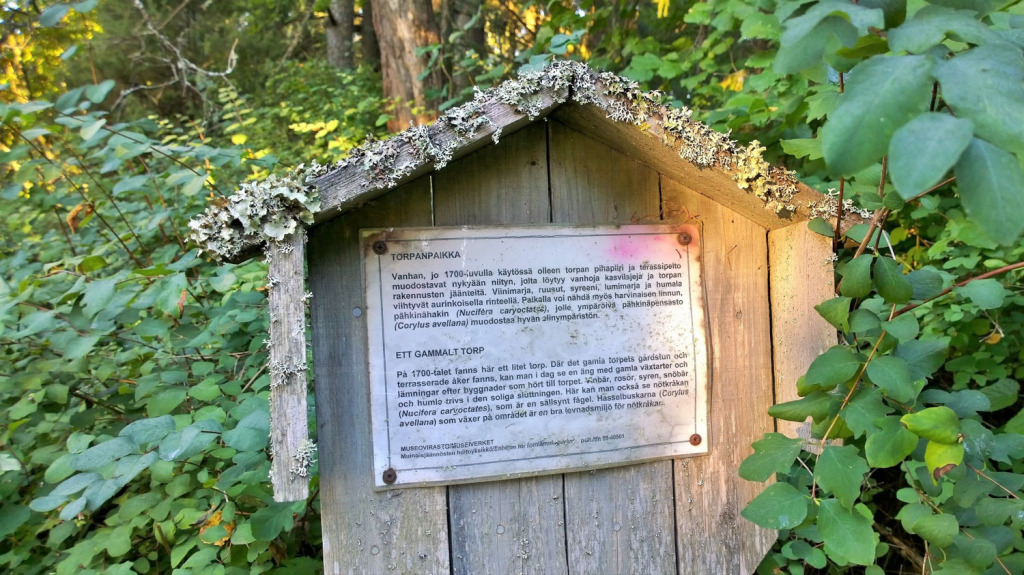



Leave a Reply
Want to join the discussion?Feel free to contribute!